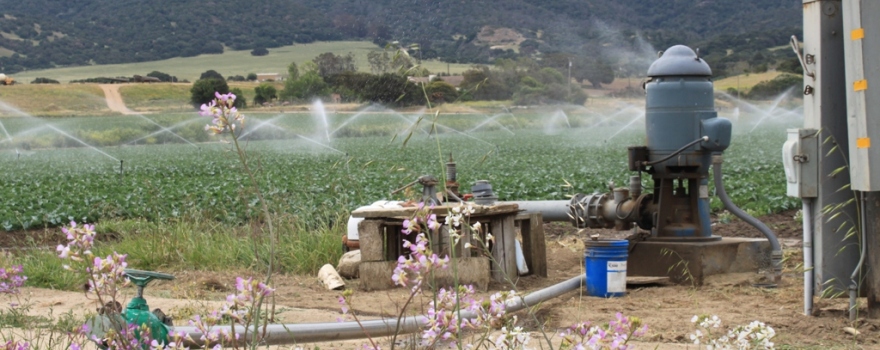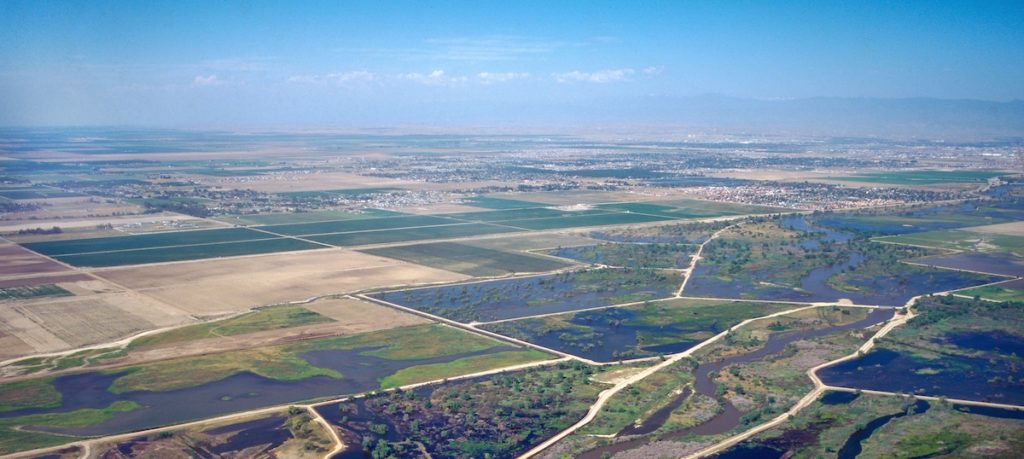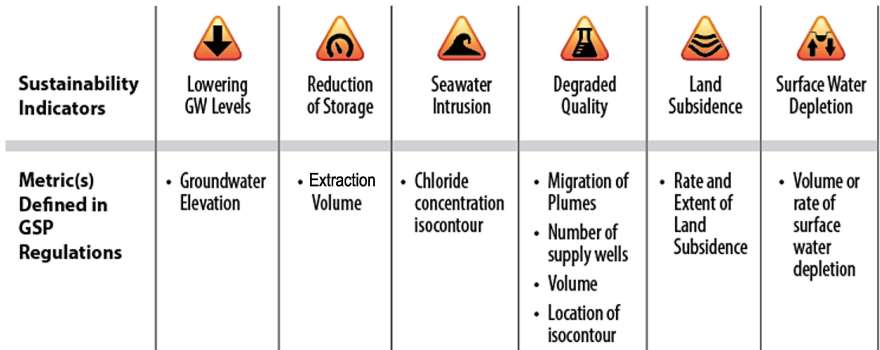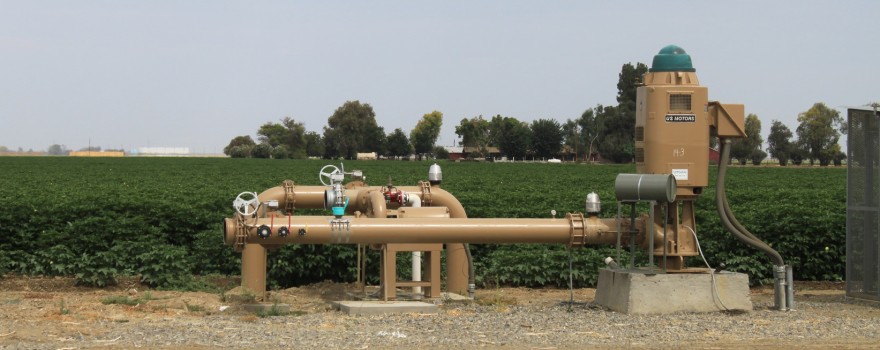 David Sandino and Maurice Hall present their big ideas on groundwater management
David Sandino and Maurice Hall present their big ideas on groundwater management
The Groundwater Resources Association of California (GRA) created the David Keith Todd Distinguished Lecture Series to honor Dr. David Keith Todd, a GRA 1999 Lifetime Achievement Award recipient, for his enormous contributions to groundwater science and technology, and to foster interest and excellence in applied groundwater science and technology. Two lecturers are selected with the lectures offered in Northern and Southern California at universities, statewide and regional GRA events, and GRA’s Annual Conference and Meeting.
The 2019 lectures featured David Sandino, Senior Staff Counsel at the Department of Water Resources, who spoke about the disconnect between legal groundwater systems and how the system actually works, describing the areas where they do not accurately reflect the physical environment and pose problems for effective groundwater management; and Maurice Hall, Associate Vice President of Ecosystems-Water at the Environmental Defense Fund, who spoke of how more holistic and inclusive groundwater management can increase the resilience of our water supply and sustain and enhance the services that groundwater basins provide for a wide range of stakeholders.
At the Groundwater Resources Association’s 2019 Western Groundwater Congress, Mr. Sandino and Mr. Hall gave brief presentations of their lectures.
Click here to read this article at Maven’s Notebook.

Groundwater managers across the state are looking to groundwater recharge as a potential solution to their community’s water challenges. However, there are concerns about how groundwater recharge in the age of SGMA actually works and how to ensure sufficient instream flows to protect those beneficial uses.
To address these questions, the Local Government Commission and the Clean Water Fund held a webinar to find out more about recharge, environmental flows, water rights, and permitting from a panel of experts. First, Stacey Sullivan from Sustainable Conservation talked about Flood MAR; next Sam Boland-Brien from the State Water Resources Control Board talked about the Environmental Flows Workgroup and permitting issues for groundwater recharge; and then Pablo Garza with the Environmental Defense Fund discussed policy issues related to groundwater recharge.
Read more at Maven’s Notebook here: GROUNDWATER RECHARGE: Balancing our depleted groundwater supplies and ecosystem needs
California’s Sustainable Groundwater Management Act (SGMA), signed into law five years ago, requires local leaders to balance groundwater demand and supplies for the first time. Groundwater is an important foundation of California’s water system, and SGMA is a crucial way of strengthening that foundation and creating a more resilient future for the state.
However, balancing groundwater budgets will not be easy. And this major challenge is further complicated by the fact that activities designed to increase groundwater supplies can unintentionally cause new groundwater quality problems or worsen existing contamination.
A new working paper that Environmental Defense Fund co-authored with Stanford’s School of Earth, Energy & Environmental Sciences; Green Science Policy Institute; and the Energy and Environmental Sciences Area of Berkeley Lab outlines how groundwater management activities can affect not only the quantity but also the quality of groundwater.
Click here to read more and download the report: Five years into SGMA, here are five important considerations for balancing groundwater quality and quantity
Building the capacity to resolve disputes and work together is critical for a sustainable water future.
However recent analysis conducted by Water in the West, the Gould Center for Conflict Resolution and Indiana University Purdue University Indianapolis suggests that alternative dispute resolution processes are rarely used even when included in water management agreements.
Given the long and expensive history associated with litigation in California and beyond, these findings suggest that local and state agencies should be doing more to educate their members on the value of alternative dispute resolution processes, like mediation and facilitation.
Read more from Stanford’s Water in the West here: Dispute Resolution Processes: Thinking through SGMA Implementation
An expert in water governance, Anita Milman’s research focuses on understanding the interplay of technical, institutional and social dimensions of water within governance processes. Milman is an associate professor in the Department of Environmental Conservation at the University of Massachusetts Amherst and the Landreth Visiting Fellow at Stanford’s Program on Water in the West (WitW). Below, Milman discusses keys to successful groundwater governance, implications toward achieving water security and her research activities at Stanford.
Q: The UN and other agencies have called water ‘a crisis of governance’ – what does this mean?
A: Today’s water challenges arise from interactions between the physical aspects of water systems and human activities. Flooding, drought, groundwater depletion, water quality degradation, etc. negatively impact human and ecological systems. Yet, these conditions are frequently either caused by or exacerbated by actions taken by humans.
In essence, water governance defines and determines how humans use and manage water resource systems. …
Continue reading at Water in the West here: Groundwater Governance Q&A with Anita Milman
Jay Lund writes,
This week’s short post is on groundwater law – from the viewpoint of physics. Water policy, management, and human law often misunderstand how groundwater and surface water work physically.
Bredehoeft, et al. (1982) distill a longstanding lament of many groundwater experts, “Perhaps the most common misconception in groundwater hydrology is that a water budget of an area determines the magnitude of possible groundwater development. Several well-known hydrologists have addressed this misconception and attempted to dispel it. Somehow, though, it persists and continues to color decisions by the water-management community.”
Continue reading at the California Water Blog here: Groundwater Law – Physical – “the water budget myth”
Susan Tatayon, chair of the Delta Stewardship Council, writes:
California has a vast water supply not just in its lakes, rivers, and estuaries, but also underground. For years, California’s cities and farms have depended on this unseen resource, especially in the southern part of the state where rainfall is low, surface water is scarce, and demand is high. In fact, underground aquifers provide about 40 percent of California’s water supply in a normal year and significantly more in dry years.
Groundwater is also something that, until recently, was largely absent from the state’s water management oversight; this changed in 2014 with the passage of the Sustainable Groundwater Management Act (SGMA). For the first time in its history, California established minimum standards for sustainable groundwater management. If local resource managers fail to meet these standards, this legislation authorizes the state to intervene to protect groundwater basins. SGMA is an earth-shaking move toward managing California’s groundwater and surface water as an interconnected system.
This month has seen a flurry of SGMA-related activity. Following an extensive, two-year technical review, the Department of Water Resources (DWR) made its first SGMA determination, approving nine alternatives to groundwater sustainability plans (GSPs) and disapproving six plans. This initial determination is an important first test of SGMA and sets the bar for future GSPs and alternative plans ahead of a Jan. 31, 2020 deadline for Groundwater Sustainability Agencies (GSAs) to submit their plans.
Continue reading at the Delta Stewardship Council blog here: What Does Groundwater Have to Do with the Delta? A Lot.
 Minimum thresholds, measurable objectives, undesirable results: A panel of consultants discuss the specifics of how their GSAs determined sustainable management criteria
Minimum thresholds, measurable objectives, undesirable results: A panel of consultants discuss the specifics of how their GSAs determined sustainable management criteria
The passage of the Sustainable Groundwater Management Act in 2014 requires that groundwater basins be managed such that the use of groundwater can be maintained during the planning and implementation horizon without causing undesirable results. In order to demonstrate sustainability, the Groundwater Sustainability Plan regulations require the development of locally-defined quantitative sustainable management criteria, including undesirable results, minimum thresholds, and measurable objectives.
At the second annual Groundwater Sustainability Agency Summit, hosted by the Groundwater Resources Association in June of this year, a panel of consultants discussed the process and the specifics of how they developed sustainable management criteria for their basins.
Click here to this article from Maven’s Notebook.
Susan Tatayon, Chair of the Delta Stewardship Council, writes:
“California has a vast water supply not just in its lakes, rivers, and estuaries, but also underground. For years, California’s cities and farms have depended on this unseen resource, especially in the southern part of the state where rainfall is low, surface water is scarce, and demand is high. In fact, underground aquifers provide about 40 percent of California’s water supply in a normal year and significantly more in dry years.
Groundwater is also something that, until recently, was largely absent from the state’s water management oversight; this changed in 2014 with the passage of the Sustainable Groundwater Management Act (SGMA). For the first time in its history, California established minimum standards for sustainable groundwater management.
If local resource managers fail to meet these standards, this legislation authorizes the state to intervene to protect groundwater basins. SGMA is an earth-shaking move toward managing California’s groundwater and surface water as an interconnected system. … ”
Read more from the Delta Stewardship Council’s blog here: What Does Groundwater Have to Do with the Delta? A Lot
 DWR’s Taryn Ravazzini updates the Commission on the Department’s activities, including major milestones, 2019 activities, and the Department’s technical and financial assistance
DWR’s Taryn Ravazzini updates the Commission on the Department’s activities, including major milestones, 2019 activities, and the Department’s technical and financial assistance


